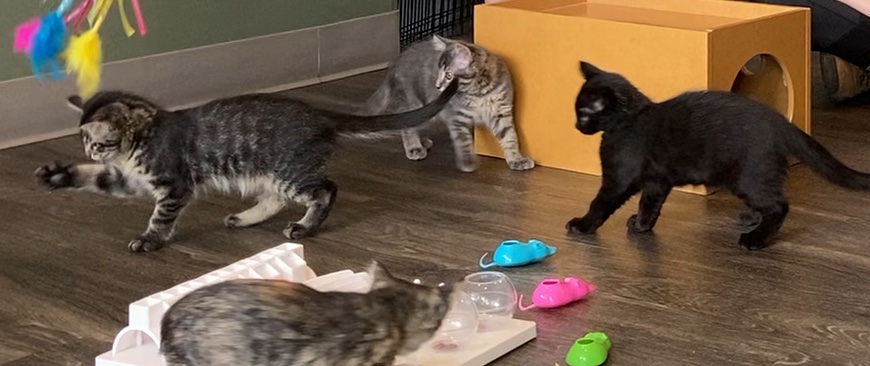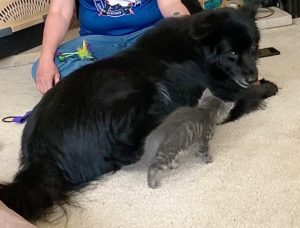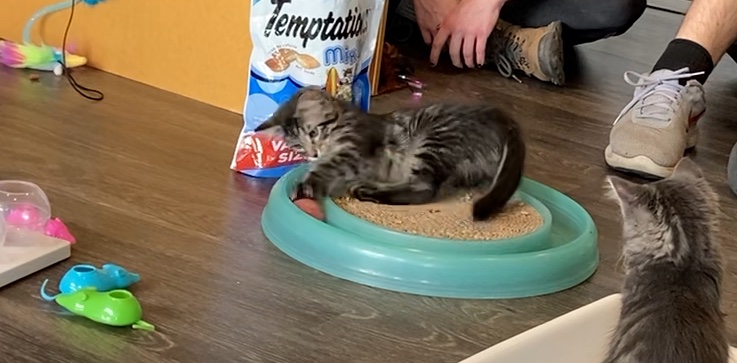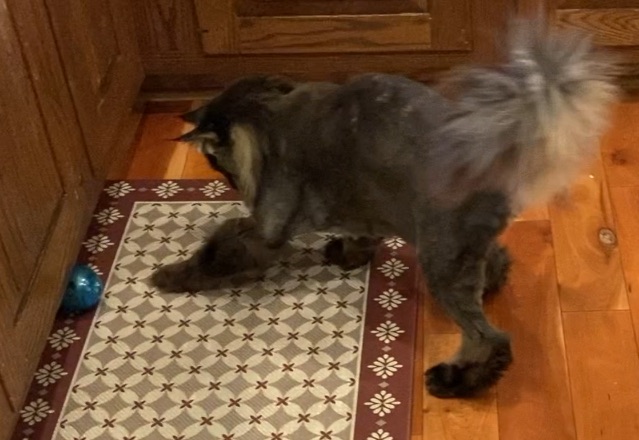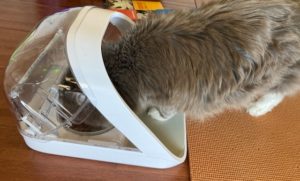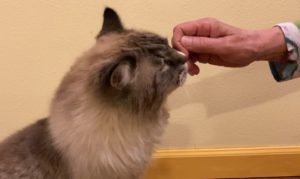 Cats live in a landscape of odors. Odors tell them about their world and its inhabitants. The signature odor or scent can play an important role when introducing a cat to something new – whether it is a another cat, dog, person or a piece of furniture.
Cats live in a landscape of odors. Odors tell them about their world and its inhabitants. The signature odor or scent can play an important role when introducing a cat to something new – whether it is a another cat, dog, person or a piece of furniture.
Cats and signature scents
The signature scent is a collection of odors secreted by an individual animal. This signature scent is influenced by the individual’s hormones, diet, immune system and other animals that he hangs out with. Using her superb sense of smell, a cat can learn a surprising amount of information from the signature scent of another animal.
- gender
- health status
- sexual receptivity
- fitness
- are you part of my social group?
The signature scent gives the cat a way of identifying an individual animal. But, like the resume submitted by a job applicant, it is not the whole story. There is more to be learned by a physical encounter. A young cat may pick up the signature odor of an older cat with kidney disease and find this scent a little frightening – he has never met a cat that smelled like that before. After he spends some time with this older cat, he learns that particular odor of disease is not going to hurt him.
Cats and signature scents: learning about other cats
Introducing cats to cats
Free-roaming cats live in colonies if there is enough food in the neighborhood. Each colony has its own signature scent. Members of the colony identify each other by this scent. This colony scent also marks the core territory of the colony, where the members feel safe, can eat, rest and play.
One of the first things we should do to introduce a cat to another cat is to swap scents. Each cat will pick up some of the other’s scent – it is the start to creating a sense of “colony”.
An easy way to do this is to exchange bedding between the two. Why choose bedding? We hope that the cats are relaxed and calm in their beds and so the scents and pheromones in the bedding should convey a message of calm and relaxation in addition to things mentioned above, such as gender and health status. On the other hand, bedding may not be the best choice if the cat is in pain and discomfort when in the bed. See below for other ways to collect your cat’s scent.
Exchange the scented items between the two cats before they have any visual contact. There may be some hissing and growling at the scented object but hopefully this will go away in a few days. You will need to renew the scented item every other day or so. If your cat ignores the item and just walks on by, then she is not disturbed by this new addition so far. You can proceed on to step 2 of Introducing Cats: “time sharing” the common areas and the newcomer’s room.
Collecting Your Cat’s Scent
In The Trainable Cat, Sara Ellis views scent collection as one of 9 key skills that form a foundation for training cats. She recommends getting your cat accustomed to the process. The goal is to make scent collection part of a pleasurable experience. There are several ways to collect your cat’s scent – use whichever way suits your kitty.
- Use a clean, light-weight cotton glove while stroking the cat in front of the ears and under the chin and cheeks (behind the whiskers).
- You can also collect hair from the brush you’ve used to groom your cat in these areas.
- As mentioned above, you can place a small piece of cloth on your cat’s bed for him to lie on.
The more you touch/brush these areas or the longer your cat lies on the cloth, the stronger the scent.
from Bradshaw, John W. S. and Sarah L. H. Ellis. “The Trainable Cat: A Practical Guide to Making Life Happier for You and Your Cat.” (2016).
Cats and signature scents: learning about dogs and humans
Scent swapping should be the first step in introducing cats to dogs and even humans.
- A piece of the dog’s bedding is a way to start the cat-dog introduction. Follow the same steps used for introducing two cats.
- Let’s say you have a pet sitter coming to care for your cat while you are away – you may feel awkward asking for a T-shirt prior to the pet sitter coming to your home but your cat may appreciate it!
Cats and signature scents: new items in the house
If you are able to collect your cat’s scent, applying it to a new piece of furniture just might keep your cat from scratching that new armchair ( Make sure to put a scratching post nearby!) Take something with your cat’s scent on it and wipe the new piece of furniture with it. Now, that chair or table smells familiar to your cat and its sudden appearance is not so scary.
Remember – Our homes are our cat’s territory; we are members of our cat’s colony. Our homes have the signature scent that makes our cats feel safe and secure. Please make sure to maintain the “colony scent”!

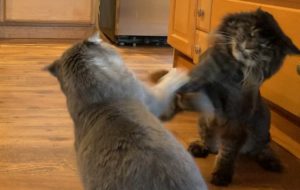 It is not uncommon for cats in a multi-cat household to engage in some redirected aggression. For example, cats waiting to be fed may engage in “boxing matches”. A cat watching birds at a window may swat at another cat who comes “too close” to her “bird-watching” spot. The cats are frustrated because the food or the birds are not available and they release their frustration through a physical motion. These incidents usually extinguish themselves and there are not lasting consequences.
It is not uncommon for cats in a multi-cat household to engage in some redirected aggression. For example, cats waiting to be fed may engage in “boxing matches”. A cat watching birds at a window may swat at another cat who comes “too close” to her “bird-watching” spot. The cats are frustrated because the food or the birds are not available and they release their frustration through a physical motion. These incidents usually extinguish themselves and there are not lasting consequences.
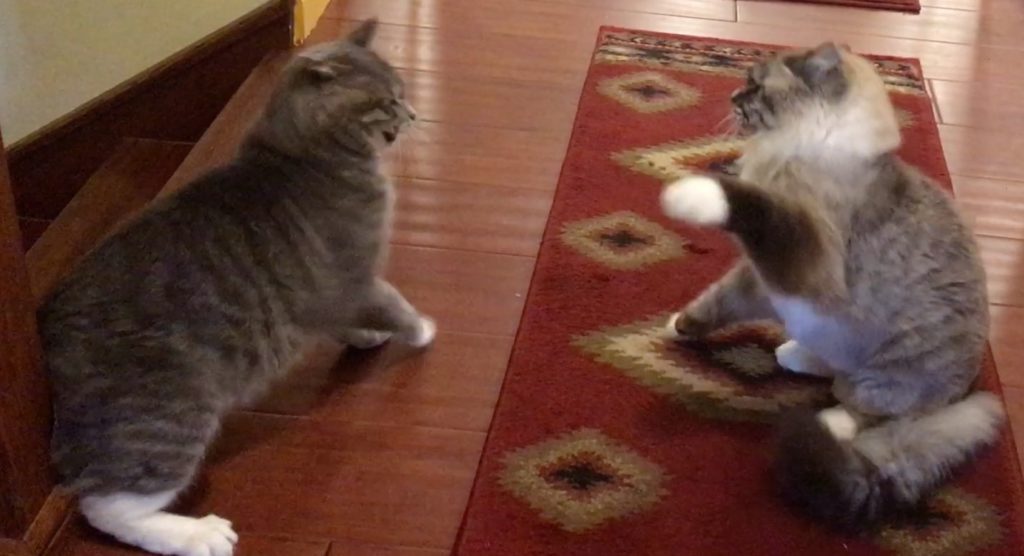 You are sitting by the window, engrossed in your latest murder mystery. You don’t notice that neighborhood tabby outside your window but your cat does and goes into full battle mode, hissing and striking at the window. You look up and jump, as your cat turns and strikes out at you. She looks like a miniature saber tooth tiger! Alarmed, you throw your glass of water at her as you beat a hasty retreat.
You are sitting by the window, engrossed in your latest murder mystery. You don’t notice that neighborhood tabby outside your window but your cat does and goes into full battle mode, hissing and striking at the window. You look up and jump, as your cat turns and strikes out at you. She looks like a miniature saber tooth tiger! Alarmed, you throw your glass of water at her as you beat a hasty retreat. Kitten kindergarten programs are great ways to continue to expose kittens to new experiences and accustom them to humans. But what if you can’t find one of these programs near you? Consider introducing your kitten to your friends and family in your own home.
Kitten kindergarten programs are great ways to continue to expose kittens to new experiences and accustom them to humans. But what if you can’t find one of these programs near you? Consider introducing your kitten to your friends and family in your own home.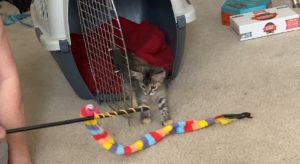 Lure your kitten out with treats or a toy. Allow her to approach people on her own – reward with a treat or play. Guests can take turns luring the kitten with toys, cuddling the kitten (if she accepts this) and offering snacks!
Lure your kitten out with treats or a toy. Allow her to approach people on her own – reward with a treat or play. Guests can take turns luring the kitten with toys, cuddling the kitten (if she accepts this) and offering snacks!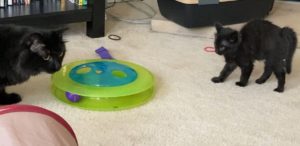
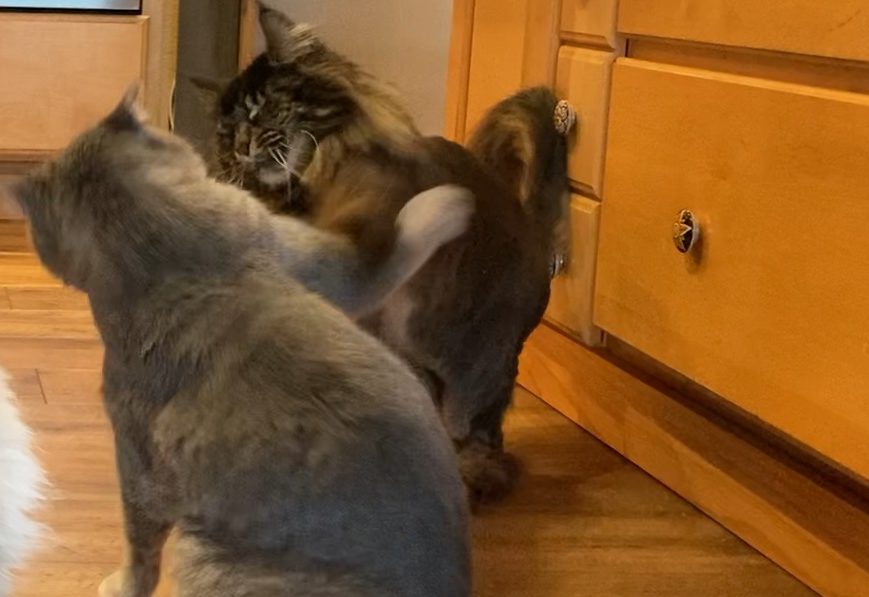
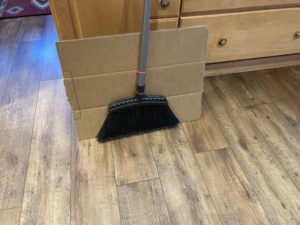

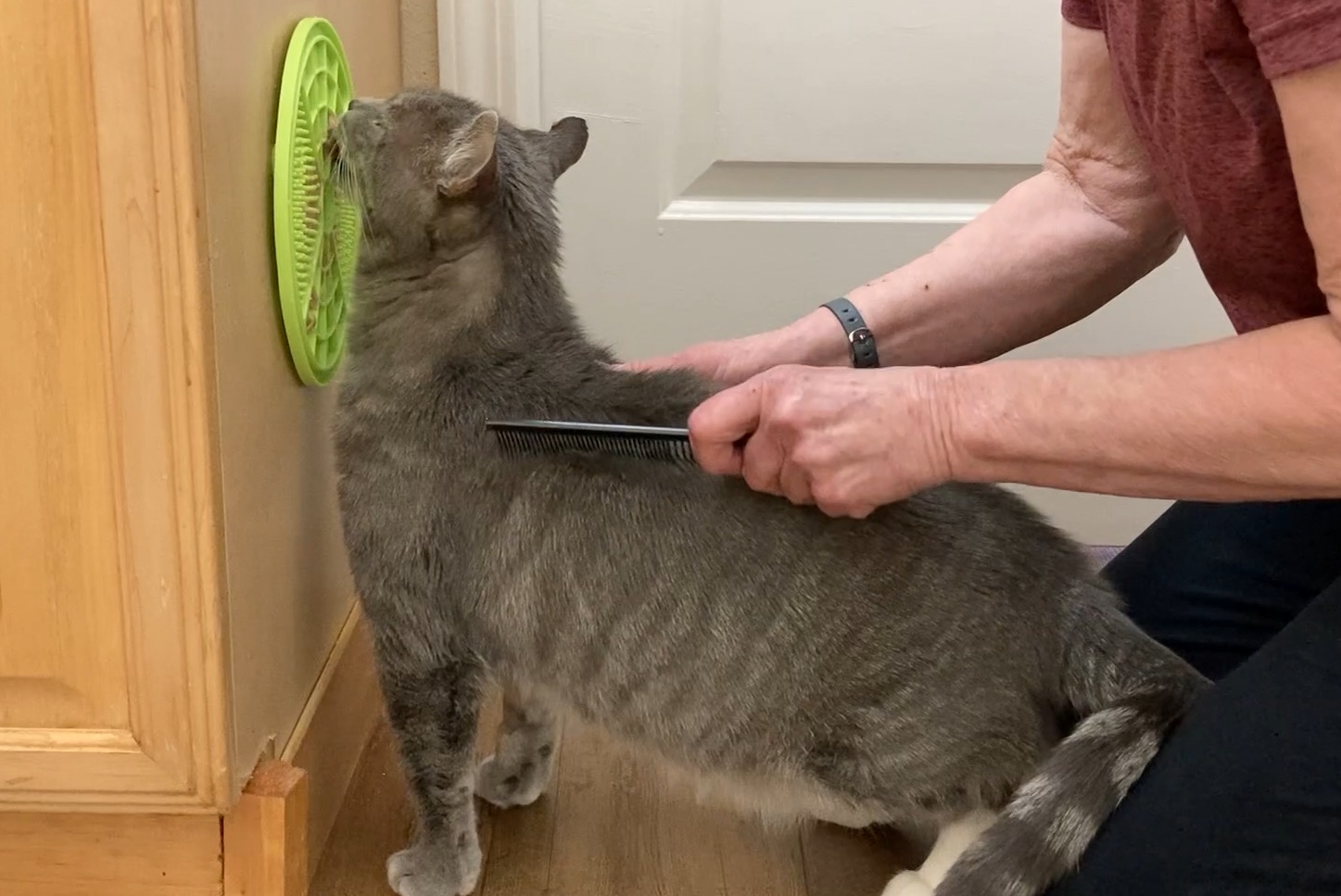
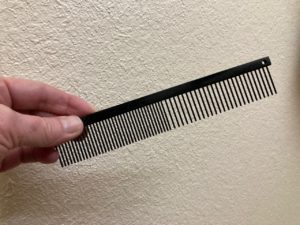
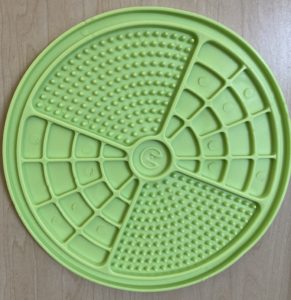
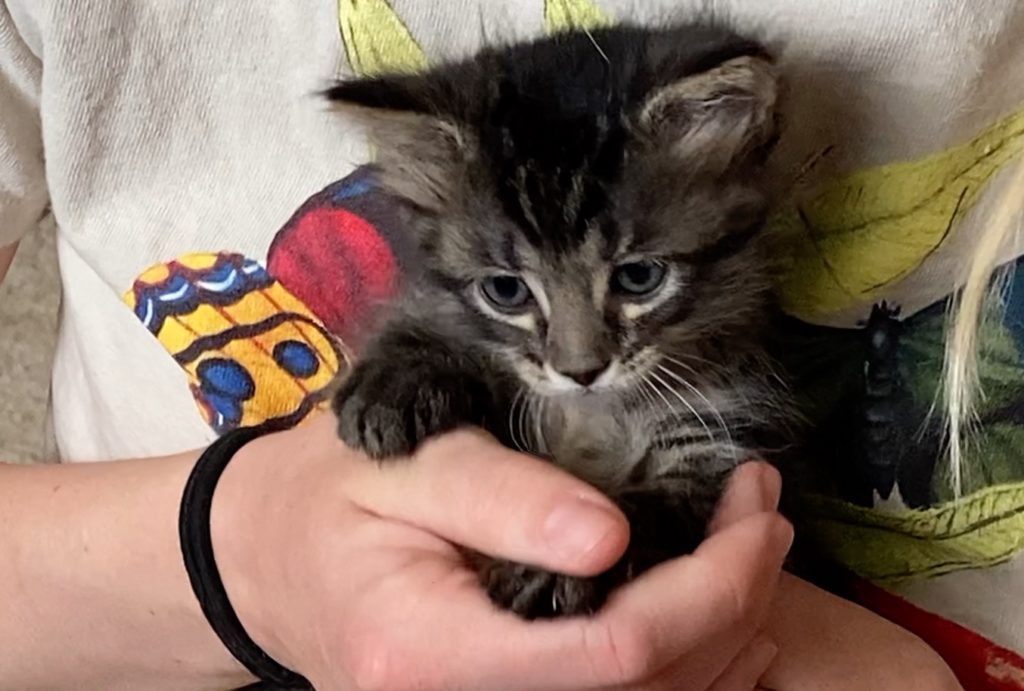
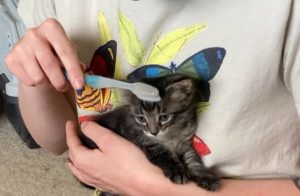
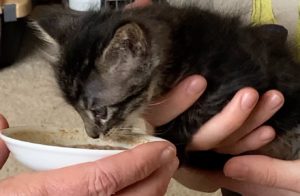 A human caregiver cannot replace a kitten’s mother – after all, we are not cats. For example, how does a human foster mimic the frustration accompanying weaning that encourages the kitten to get his own food? Kittens raised without their mothers and siblings are prone to behavioral issues – they don’t know how to deal with frustration; early separation from the mother may cause
A human caregiver cannot replace a kitten’s mother – after all, we are not cats. For example, how does a human foster mimic the frustration accompanying weaning that encourages the kitten to get his own food? Kittens raised without their mothers and siblings are prone to behavioral issues – they don’t know how to deal with frustration; early separation from the mother may cause 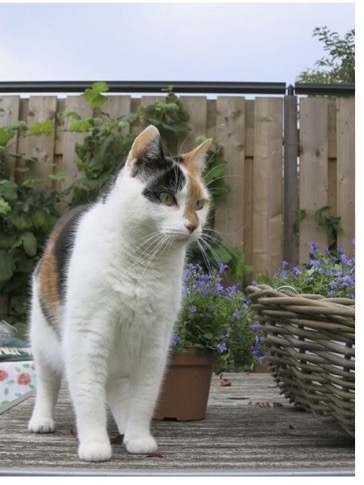

 cat on a morning or afternoon walk in your backyard or neighborhood. After all, getting outdoors is good for us too! It never hurts to have your cat harnessed even in a fenced backyard – this way you can clip the leash on as needed. If you walk your cat in public places, make sure to have kitty in a harness with leash and have a mobile “outdoor safe place” – stroller or backpack – with you.
cat on a morning or afternoon walk in your backyard or neighborhood. After all, getting outdoors is good for us too! It never hurts to have your cat harnessed even in a fenced backyard – this way you can clip the leash on as needed. If you walk your cat in public places, make sure to have kitty in a harness with leash and have a mobile “outdoor safe place” – stroller or backpack – with you.